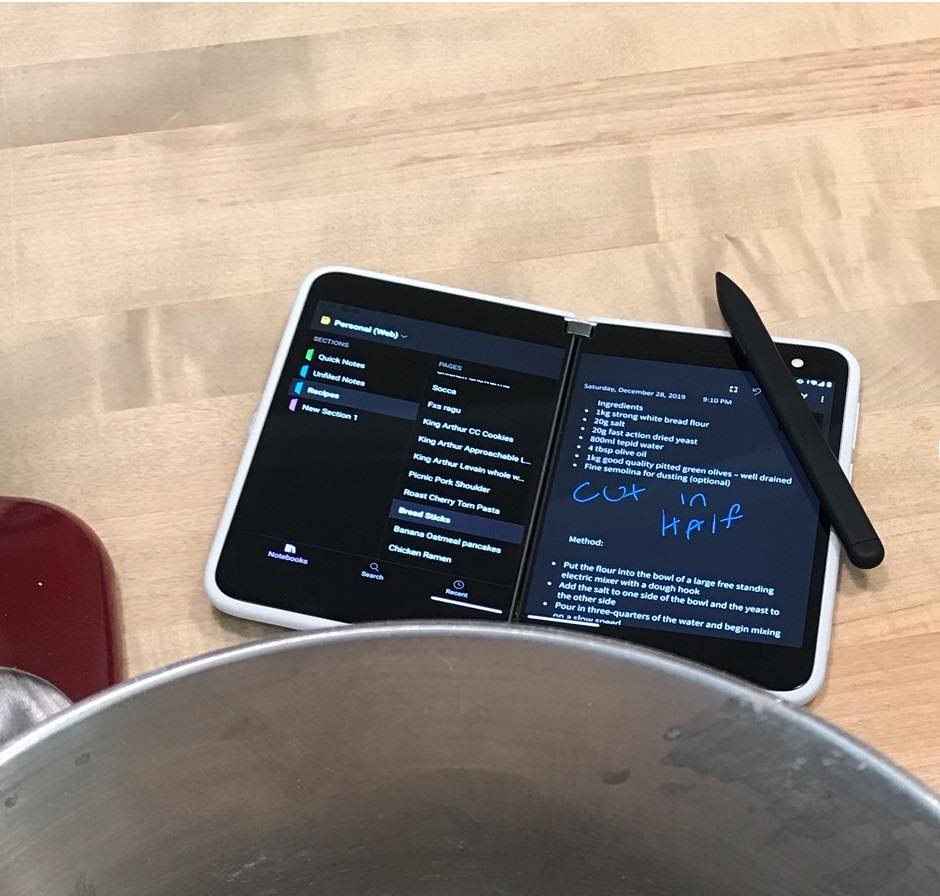

Unlike most phones, the navigation doesn't rotate when you rotate the phone, so the pill will stay in its original position.

It takes a little while to get used to, especially if you like to swipe left and right on the navigation pill to switch between apps on stock Android. Dragging the navigation pill allows you to move the selected application across screens, and dragging the app into the center of the Duo will stretch the app to fill both displays. Each screen has its own navigation, so you don't need to worry about checking which app is active before going home or back, like you do with standard multi-window on Android. The Surface Duo sticks close to Android 10's gesture navigation: swipe up from the bottom to go home, and swipe from the left or right to go back.

Microsoft Launcher is the default home screen, Edge is the web browser, SwiftKey is the keyboard, and so on. While you do get the standard package of Google apps, Microsoft has replaced some of the defaults with its own products. Notifications have larger buttons, and there's a Microsoft section in the Settings, but most of the modifications are related to dual-screen operation. If you were hoping for a revival of Windows Phone, you'll be disappointed - the Surface Duo sticks very close to stock Android. I was curious to see what functional or visual changes Microsoft would make to the Android operating system to merge it with the company's Fluent design language. There are bugs, some features are missing, and most people should wait for the Duo 2. It's Microsoft's first Android device ever, and it's the company's first smartphone since the implosion of Windows 10 Mobile.This is a unique product, and while it (mostly) succeeds at its goal of being a mobile productivity station, it's still ultimately a first-generation device. Samsung has released several foldable phones, LG is developing a dual-screen device, and now Microsoft has the Surface Duo.The Surface Duo is the first Android device with two integrated displays since the Kyocera Echo and Sony Tablet P, but it's more than just a side project by an existing Android phone maker. This has sent some manufacturers to go back to the drawing board in search of something more radical and exciting. Just like how a desktop PC from eight years ago can still handle basic productivity tasks in 2020, a flagship smartphone from two or three years ago isn't radically different from what you can buy today, and there’s only so much room for innovation in the flat glass slab form factor. Over the past few years, smartphones have stopped evolving at a rapid pace and settled into iterative, yawn-inducing update cycles.


 0 kommentar(er)
0 kommentar(er)
